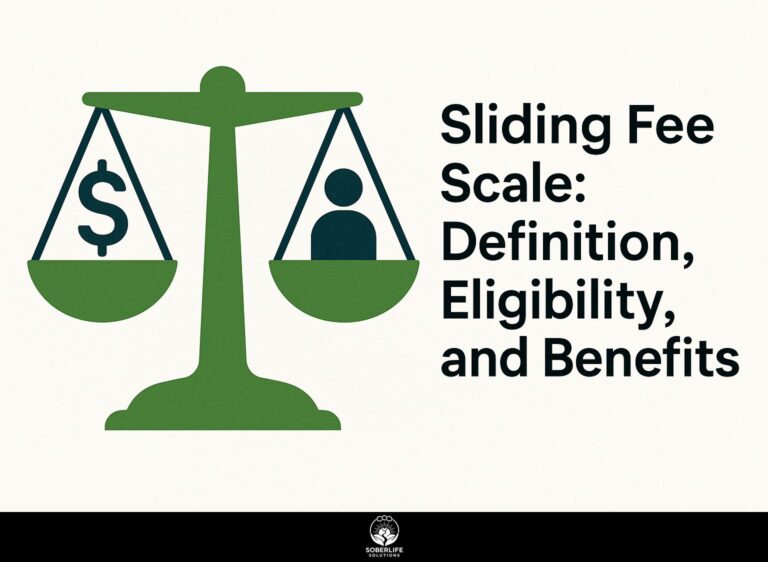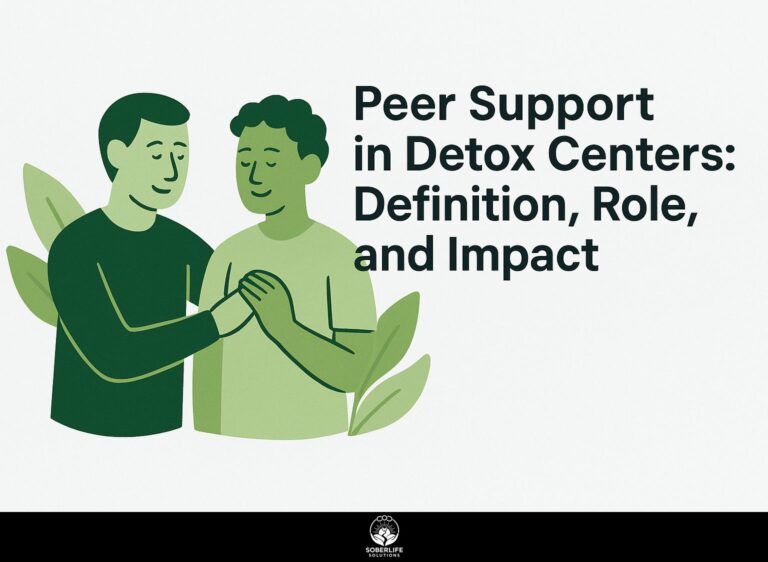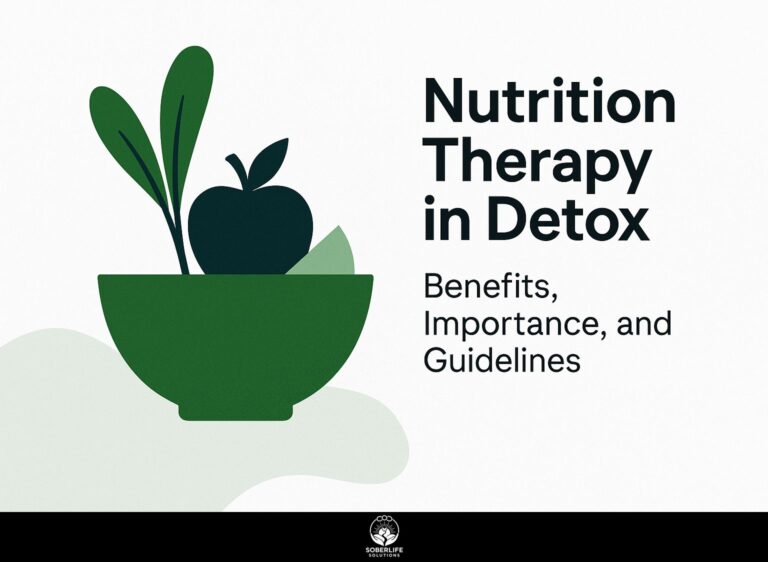How to Verify Detox Centers? A Step-by-Step Guide

Finding the right detox center can be confusing, especially for people dealing with drug addiction or substance use problems. Getting the right mental health help is important for a successful recovery process. This step-by-step guide will help you verify detox centers by examining treatment options, staff qualifications, and facility environments. Make sure you choose an option that meets your needs and helps create a healing environment.
Key Takeaways:
Understanding Detoxification
Detoxification is the medical process of safely withdrawing an individual from substances, addressing withdrawal symptoms through a medically supervised regimen.
It’s important for people to have detox treatment in a hospital because withdrawal can be risky.
Different substances cause different symptoms. Stopping opioids can cause severe pain and anxiety, and quitting alcohol might lead to tremors and seizures.
While detoxing, doctors monitor key health indicators and use medications like benzodiazepines for alcohol withdrawal or methadone for opioid withdrawal to ease symptoms. Curious about how these medications are used effectively in detox processes? Our analysis of medically monitored detox explains this in detail.
This support ensures safety and serves as a foundation for further treatment, emphasizing the need for a customized detox plan for each individual, as highlighted in the Clinical Guidelines for Ambulatory Detoxification by the New Jersey Department of Human Services.
Importance of Choosing the Right Center
Choosing the right detox center is important for recovery because it affects the patient’s safety and the effectiveness of the treatment.
Consider specific factors when evaluating a detox center. Accreditation confirms that the facility follows basic rules for providing care.
Consider treatment methods that fit your specific needs, like detox with medication or whole-body therapies. Strong support services, such as counseling and aftercare planning, improve recovery chances.
Research each center’s success rates and read reviews from former patients to gauge the quality of care. Looking at these factors carefully can help build a strong base for a good recovery.
Researching Detox Centers

Careful research on detox centers can show important information about their treatment methods and how well they help people recover. For those looking to take their evaluation further, discover key criteria to evaluate detox centers effectively to ensure they align with your recovery goals.
Online Reviews and Testimonials
Reviews and feedback from past patients give useful information about how well detox centers work and what the environment is like.
To find reliable reviews, start by visiting platforms like Google Reviews and Trustpilot. Choose centers that receive a lot of feedback, as this usually means they have varied viewpoints.
Notice frequent problems noted in the comments-common topics like staff behavior or treatment methods can give helpful details about the center’s general reputation.
Evaluate the credibility of reviewers; profiles with detailed experiences are typically more trustworthy than vague comments. A detox center with mostly positive reviews and few complaints likely reflects a supportive environment.
Accreditations and Certifications
Accreditations from recognized organizations, such as the Commission on Accreditation of Rehabilitation Facilities, assure that a detox center adheres to established treatment standards. As a respected source, Wikipedia provides further insights into the rigorous criteria involved in these accreditations.
Other important certifications to consider include the Joint Commission (JCAHO), which focuses on patient safety and quality care, and the National Association of Addiction Treatment Providers (NAATP), which supports effective methods in the field.
These certifications show that the facility uses tested methods and maintains a high level of care. Choosing a detox center with these certifications increases the likelihood of a successful treatment and complies with legal rules, ensuring a safer recovery environment.
Evaluating Treatment Methods

Knowing the different treatment methods provided by detox centers is important for choosing a program that fits personal recovery needs.
Types of Detox Programs Offered
Detox centers often offer a range of detox programs, including options for patients who live at home and those who stay at the facility, to meet various patient needs.
Outpatient detox programs let patients get treatment while staying at home. These programs are designed for people with milder substance use problems, such as alcohol or cannabis dependence.
These programs typically involve regular counseling sessions and medication management, providing flexibility and lower costs. For context, a study by ScienceDirect explores outpatient versus inpatient opioid detoxification and highlights the varying needs of patients.
In contrast, inpatient detox offers a controlled setting with continuous medical oversight, suitable for people dealing with serious addictions such as opioids or benzodiazepines. This level of care is particularly crucial for those undergoing medically monitored detox, as it ensures safe management of withdrawal symptoms and overall health monitoring.
While the former promotes independence, the latter provides essential medical support, highlighting the need to match the program to the patient’s specific needs.
Holistic vs. Medical Detox
Detoxing with natural methods focuses on the whole person, while medical detox uses drugs to manage withdrawal symptoms.
For example, detox programs may involve treatments such as yoga, meditation, and nutritional advice. These activities help improve balance and support emotional health.
In contrast, medical detox often uses medications such as buprenorphine to alleviate withdrawal discomfort and minimize cravings.
Yoga and meditation help with relaxation and being present, while buprenorphine works fast to help patients.
Deciding on these methods relies on personal requirements. Many professionals recommend using both techniques for the best results, covering the physical and mental parts of addiction.
Assessing Staff Qualifications

Checking the skills and experience of employees at detox centers is important for guaranteeing good care for patients and successful treatment. For a thorough understanding of what makes a quality detox center, consider examining key criteria that can help you make an informed choice (our guide on evaluating rehab and detox centers details crucial factors to consider).
Qualifications of Medical Personnel
The qualifications of medical personnel, including psychiatrists and licensed therapists, directly impact the quality of care provided during detoxification.
When evaluating potential staff, prioritize candidates with certifications from the American Psychiatric Association (APA), as this signifies adherence to established standards.
Look for professionals who have worked in addiction treatment, preferably with at least two years of experience. This experience helps them learn more about the challenges of withdrawal symptoms and related disorders.
Carry out detailed interviews that evaluate both technical skills and the ability to empathize and communicate well, which are important for establishing trust with patients during this sensitive period.
Experience of Support Staff
The abilities and education of support staff are essential for creating a nurturing environment that aids patient recovery and engagement.
Support staff with a lot of experience can easily connect with patients, which is important during recovery. They should be trained in active listening and empathetic communication, enabling them to address patients’ emotional needs.
For example, peer support programs, where trained recovery mentors share their experiences, can greatly improve patient morale. Adding counseling sessions to recovery helps create individualized coping methods, leading to improved results over time.
Organizations can use telehealth platforms to give ongoing support, ensuring patients can get help even after they leave the facility.
Facility Environment

The environment of a detox center greatly impacts patients’ comfort and safety, which are key for a successful recovery.
Safety and Cleanliness Standards
Strict safety and cleanliness rules in detox centers provide a clean and safe place for patients receiving treatment.
To assess these standards, detox centers should implement specific metrics.
For example, it is recommended to have one staff member for every five patients to provide personalized care. Regular cleanliness audits should occur at least weekly, focusing on patient areas, kitchen facilities, and restrooms.
Centers should maintain a detailed log of incidents related to hygiene or safety, ideally reviewing this data monthly.
By adhering to these standards, detox centers can create a supportive atmosphere that prioritizes patient health and safety.
Comfort and Amenities
Comfort and amenities in detox facilities, such as private rooms and recreational areas, contribute significantly to the overall recovery experience.
For example, private rooms provide privacy and peace, letting people think and rest without interruptions.
Recreational areas provide essential outlets for stress relief, where activities such as yoga, art therapy, or group fitness classes promote physical health and emotional well-being.
Therapy rooms with natural light and comfortable chairs create a welcoming environment, helping clients feel at ease to talk openly during sessions.
Together, these elements create a supportive environment conducive to healing and personal growth.
Cost and Insurance Considerations

Knowing the expenses and insurance choices for detox services assists you in making wise financial choices about treatment. For an extensive analysis of these considerations, our comprehensive guide on Detox Services Costs: Financial Planning and Insurance Options delves into the details.
Understanding Pricing Structures
Pricing structures for detox programs can vary widely, often depending on factors such as location, services provided, and duration of stay.
Typically, detox centers offer two major pricing models: daily rates and flat fees.
Daily rates can range from $500 to $1,500 per day, which means a typical 30-day program could cost between $15,000 and $45,000. In contrast, flat fees might cover the entire duration for anywhere between $10,000 and $25,000, depending on the services included, such as medical supervision and therapy sessions.
It’s essential to inquire about additional costs, like amenities or specialized treatments, and calculate your total based on your anticipated length of stay and required services.
Insurance Coverage Options
It’s important for patients looking for detox treatments to understand insurance plans because these plans can significantly affect their out-of-pocket costs.
To check your insurance coverage for detox services, start by reviewing your policy documents for any specific mental health and substance abuse benefits. Contact your insurance provider directly, and inquire about coverage specifics such as copays, deductibles, and whether detox facilities are in-network.
Prepare a list of questions, such as:
- “Are withdrawals covered?”
- “What is the maximum number of days covered?”
Verifying these details before admission can prevent unexpected costs and facilitate a smoother treatment process.
Making an Informed Decision
Choosing the right detox center can increase the chances of a successful recovery.
- Begin by evaluating potential centers based on their treatment philosophies and success rates.
- Look for programs that use effective treatments, such as cognitive-behavioral therapy (CBT) and dialectical behavior therapy (DBT). Check reviews on platforms like Google and Yelp to gauge experiences from past patients. Consult professionals for personal recommendations.
- Develop a recovery plan that outlines your goals, support systems, and strategies for maintaining sobriety after treatment, which can greatly aid in the recovery process.
Resources for Further Assistance
Getting more help and support can strengthen people as they work towards staying sober and healthy for the long term.
Different groups and tools are available to help when needed.
For immediate help, you can contact the Substance Abuse and Mental Health Services Administration (SAMHSA) at 1-800-662-HELP.
Consider joining local support groups like Alcoholics Anonymous (AA) or Narcotics Anonymous (NA) for community-based support.
Online platforms, such as Sober Grid, offer a mobile community for those in recovery.
Seeing a licensed therapist or counselor can offer specific strategies for handling challenges and making progress, which are important for staying on track with your recovery.
Frequently Asked Questions
What is the process for verifying detox centers?
The first step is to research and gather a list of potential detox centers. Then, check their accreditations and licenses. After that, reach out to the centers and ask for references. Finally, visit the center in person to confirm its legitimacy.
Why is it important to verify detox centers?
Checking detox centers makes sure they follow industry rules and regulations, offering safe and effective treatment for people looking for help with substance abuse. It also helps to avoid scams and fraudulent facilities.
What should I look for when verifying detox centers?
Always check for proper accreditation and licensing from reputable organizations. Also, check the center’s reputation and request references from past patients. It is also essential to physically visit the facility to see its amenities and meet the staff.
Is it necessary to physically visit the detox center?
While it may not be required, it is highly recommended to visit the detox center in person. This lets you look at the facilities and meet the staff, helping you get a clearer idea of the center’s setting and treatment methods.
How can I confirm the legitimacy of a detox center?
Aside from checking for accreditation and licenses, you can also reach out to organizations such as the Substance Abuse and Mental Health Services Administration (SAMHSA) to verify the center’s credentials. You can also check with local health departments for any complaints or violations against the center.
What should I do if I have concerns about a detox center’s legitimacy?
If you have any doubts or concerns about a detox center’s legitimacy, it is best to move on to another facility. It is not worth the risk to undergo treatment at a potentially fraudulent center. Always make sure you stay safe and healthy when looking for help with substance abuse.





